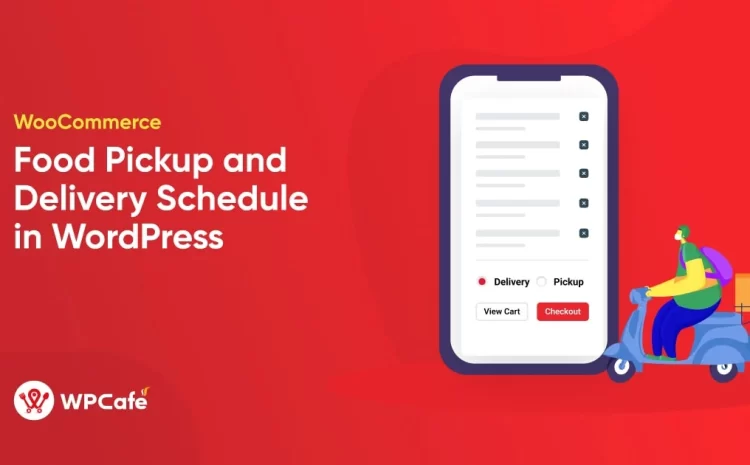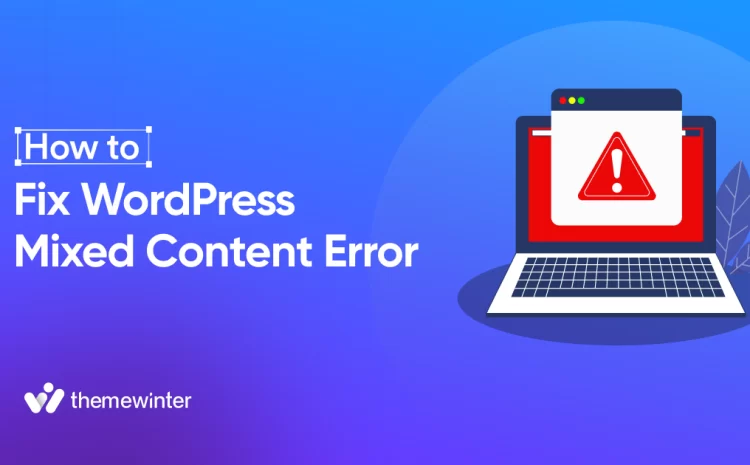A Complete Guide on How to Take Your Offline Business Online
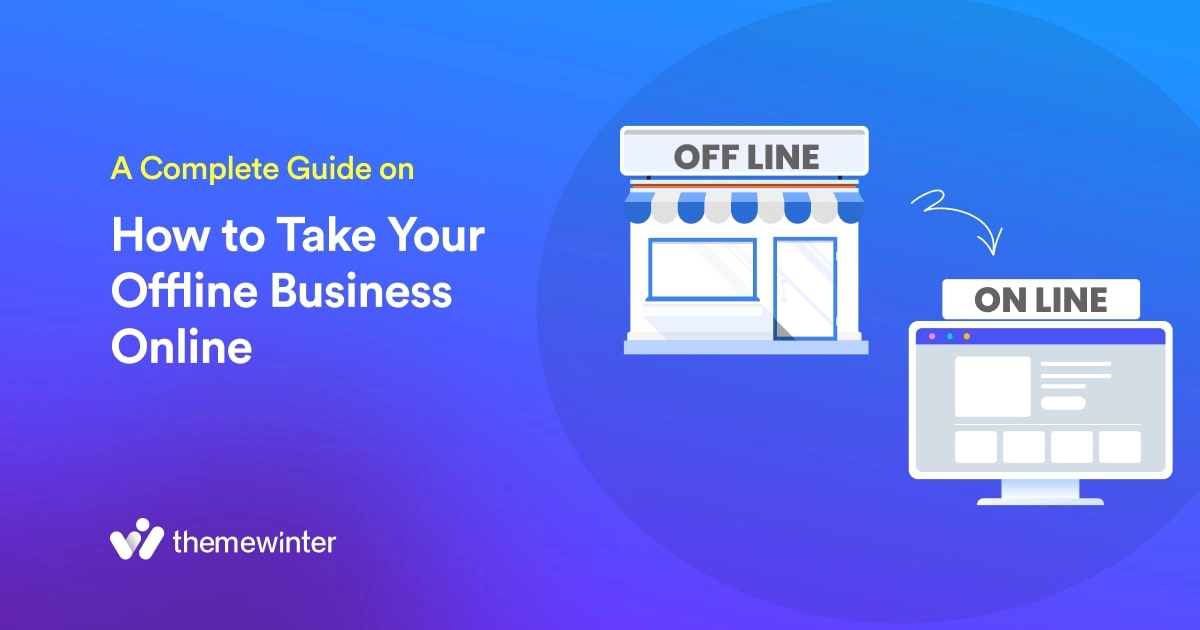
In an age where clicks and swipes reign supreme, staying anchored solely in the physical world feels like setting sail without a compass. The digital tide isn’t just rising—it’s roaring!
Businesses that once thrived in bustling streets and cozy corners are now finding a new, expansive frontier online. But how do you bridge the divide between the tactile world of brick-and-mortar and the limitless possibilities of the digital domain? If the thought of “How to Take Your Offline Business Online” has been knocking at your door, step in.
This guide on how to take offline business online is your beacon, illuminating the path to navigate your business into the thriving world of online business ideas.

Why Is Taking Your Offline Business Online Crucial?
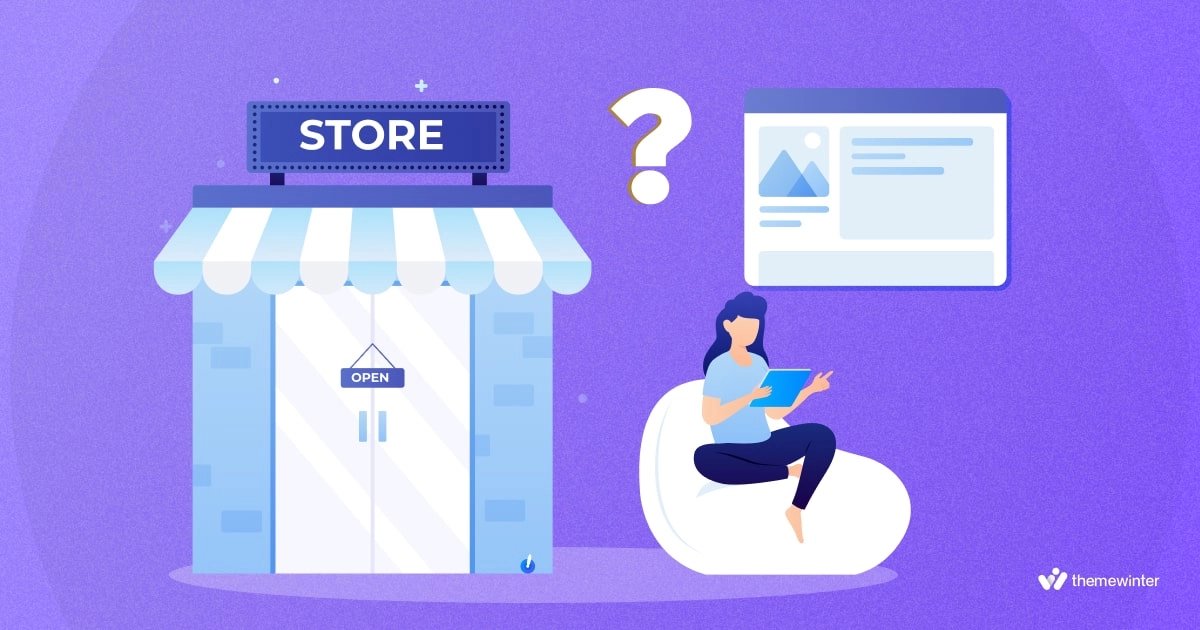
Before getting into the discussion on how to move your business online, you should know why offline to online eCommerce business planning is so important.
Let’s have a heart-to-heart. Remember the excitement when you first opened your brick-and-mortar store? The thrill of seeing familiar faces, striking conversations, and watching your hard work bear fruit? Now, imagine amplifying that joy tenfold.
How to move your business online? By extending that warm handshake into the digital world.
- Reach Beyond Your Neighborhood: Think of the internet as this massive global block party. Going offline to online ecommerce means your delightful offerings are no longer a local secret. The world becomes your neighborhood!
- More Bang for Your Buck: You’ve felt the pinch of those bills – rent, utilities, and unexpected overheads. Running an online business can ease some of that weight, leaving more in your pocket.
- Always Open, Always Welcoming: Picture your business as that friendly diner that’s open 24/7. Online, there’s always a light on, welcoming customers no matter the time.
- Chat, Laugh, Engage: Think of the chatter across the counter. Online platforms are buzzing hubs. Comments, reviews, shares—it’s a dynamic space of feedback and camaraderie.
- Know Your Crowd: Those friendly chats you have in-store? Online analytics are their digital equivalent, helping you understand what your patrons love and what they’re looking for.
- Gear Up for Tomorrow: Think of going online as planting a tree for the future. As the world increasingly shops and explores digitally, you’re setting yourself up to be in tomorrow’s main street.
- A Nod to Mother Earth: Fewer printouts, less waste, and reduced energy use—going digital is like giving a small, meaningful hug to our planet.
- Sprinkle Some Magic: With nifty digital tools, you can sprinkle a little extra magic on the shopping experience. Tailored suggestions, fun interactive chats, virtual try-ons—the sky’s the limit!
So, why take the digital leap? Because it’s like opening your store’s doors wider, letting the world in, and sharing those stories, products, and moments that make your business unique. And in this ever-connected age, staying offline is like whispering in a world ready to cheer for you out loud.
Steps on How to Take Your Offline Business Online to Expand Your Growth
Transitioning your offline business ideas to an online platform will require a lot of work, and it’s a part of online business planning. This is because there are significant differences between offline and online business ideas, spanning from marketing procedures to the selling process. However, this streamlined process will help you with moving business offline to online.
In this section, we’ll go straight to the discussion on where you will be sequentially getting your answer to ‘How to take my business online.’ So, without further ado, let’s get started!
1. Assessing Your Business and Developing Blueprint
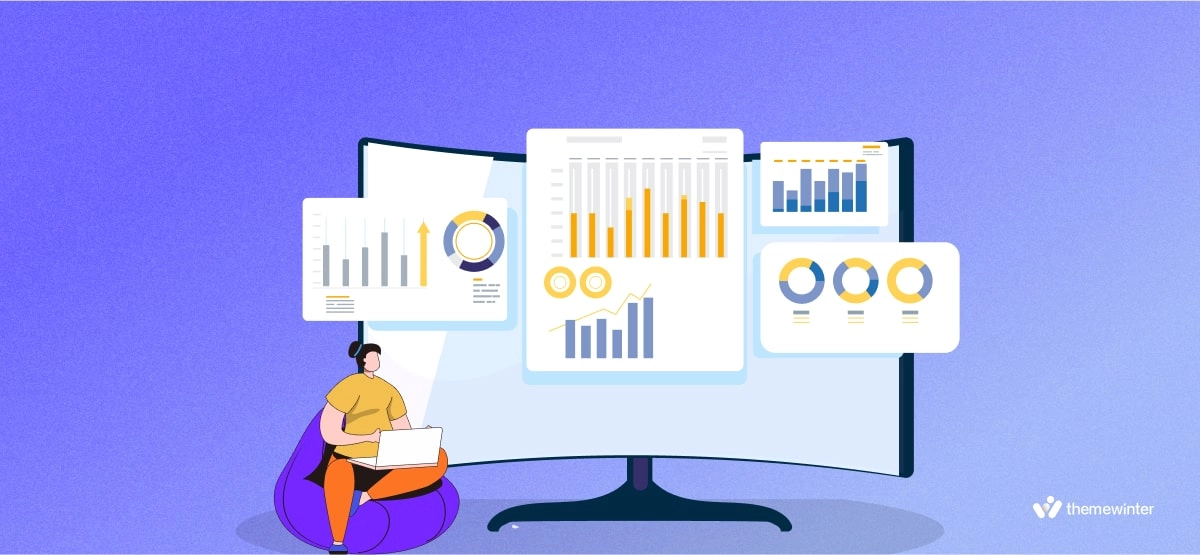
Before you charge ahead into the offline to online ecommerce realm, it’s pivotal to pause, reflect, and chart a course. Think of it as setting out on a voyage; you wouldn’t set sail without a map, right? Similarly, transitioning your business online requires a well-thought-out blueprint, a significant part of online business planning that involves understanding your digital audience.
Let’s dive and learn the initial steps of how to take your business online-
a) Identifying Your Digital Audience
Who are the folks who’ll click, swipe, and engage with your business online? Knowing them is like having a friendly chat over a cuppa. Because it’s also a significant part of online business marketing. Here’s how you can get to know your digital patrons better:
- Know Your Regulars: Start with your existing customers. Who are they offline? They’ll likely join you online. So, target them for the conversion from offline to online business.
- Demographic Dive: Analyze age, location, gender, and occupation. These hints shape your online approach.
- Track Digital Footprints: Are they more into Instagram or Facebook? Their online hangouts guide your strategy.
- Address Their Needs: Understand their online queries. Position your business as their go-to answer.
- Seek Feedback: Once online, ask for their thoughts. Simple post-event surveys or polls can be eye-openers.
- Engage with Influencers: Identify and collaborate with key figures your audience trusts. It deepens your insights.
b) Selecting the Perfect Online Platform
Choosing the right platform is akin to finding the best location for a physical store. You can consider it as the second most important factor in how to take your business online. It’s where your customers will come, explore, and, hopefully, engage. With a multitude of options available, how do you pinpoint the perfect fit for your online business ideas?
Here’s a guide to help you navigate through online business marketing:
✅ Understand Your Business Type:
- Retail: If you’re into selling products, e-commerce platforms like Shopify, WooCommerce, or BigCommerce might be your go-to. They’re designed to showcase products and facilitate smooth transactions.
- Services: Offering services? Platforms like Wix, Squarespace, or WordPress provide flexibility to describe your offerings, book appointments, and even integrate blogs to share industry insights.
- Ease of Use: Starting out, you’ll want something user-friendly, requiring minimal technical know-how. Drag-and-drop interfaces or platforms with robust customer support can be a boon during this phase.
- Customization and Scalability: Your online store should reflect your brand’s persona. Platforms that offer customizable templates allow you to add that unique touch. As your business grows, ensure the platform can scale up seamlessly without hitches.
- Budget Considerations: Just as you’d weigh the rent for a physical location, consider the costs of digital platforms. Some have monthly fees, while others might charge per transaction. Factor in setup costs, transaction fees, online business planning costs, and any add-ons you might need.
- Security: Since online transactions involve sensitive data, opt for platforms that prioritize security. SSL certificates, secure payment gateways, and regular updates are non-negotiable.
- Integration Capabilities: The ability to integrate with other tools, like email marketing software, virtual meeting tools, CRM systems, or analytics tools, can be a game-changer. It streamlines operations and amplifies your marketing efforts.
- Mobile Responsiveness: With a significant chunk of consumers shopping on mobile, your platform must offer a seamless experience across devices. Platforms that optimize for mobile or offer mobile-specific designs should be on your radar. And this is one of the most important factors in of how to take offline business online.
- Community and Support: Platforms backed by a robust community mean a wealth of resources, plugins, and third-party enhancements. Moreover, reliable customer support can be a lifesaver during hiccups.
c) Branding and Domain Considerations
Remember those early days when you were deciding on your shop’s name or designing the signboard? That rush of excitement and anticipation? Going online evokes similar feelings, with a digital twist. Hence, branding and domain consideration can play a crucial role in the case of how to take your offline business online.
Here is the process to leverage the power of how to take your offline business online:
- Reflect Your Identity: Your domain, the web address where visitors access your site, should resonate with your brand. It’s the first thing they’ll see, so make it memorable, relevant, and unmistakably ‘you’.
- Consistency is Key: From the colors of your website to the tone of your content, ensure it aligns with your offline branding. You want your customers to feel that familiar warmth and recognition when they visit your online space. This process will eventually help you to convert your business from offline to online business.
- Protect Your Brand: Consider registering variations of your domain name to ensure competitors can’t nab something too similar. Moreover, check the availability of your desired offline business ideas and its names across social platforms so your brand speaks in one unified voice everywhere.
- A Memorable Logo: If your business already has a logo, see how it looks online. Sometimes, logos need a bit of tweaking for digital platforms to ensure they’re clear and impactful.
- Think SEO: When picking a domain, consider including keywords related to your online business ideas. For instance, if you run a pottery studio, ‘clay’ or ‘ceramics’ might be terms to consider in your domain name. This can improve search visibility.
- Prepare for Growth: Your brand might evolve, and so will your products or services. Choose a domain that’s flexible enough to accommodate growth, so you’re not pigeonholed into one niche.
- Secure & Trusted: Invest in an SSL certificate for your website. This not only protects your customers’ data but also boosts your reputation. That little padlock symbol in the address bar? It’s like a digital seal of trust.

2. Building Your Online Presence
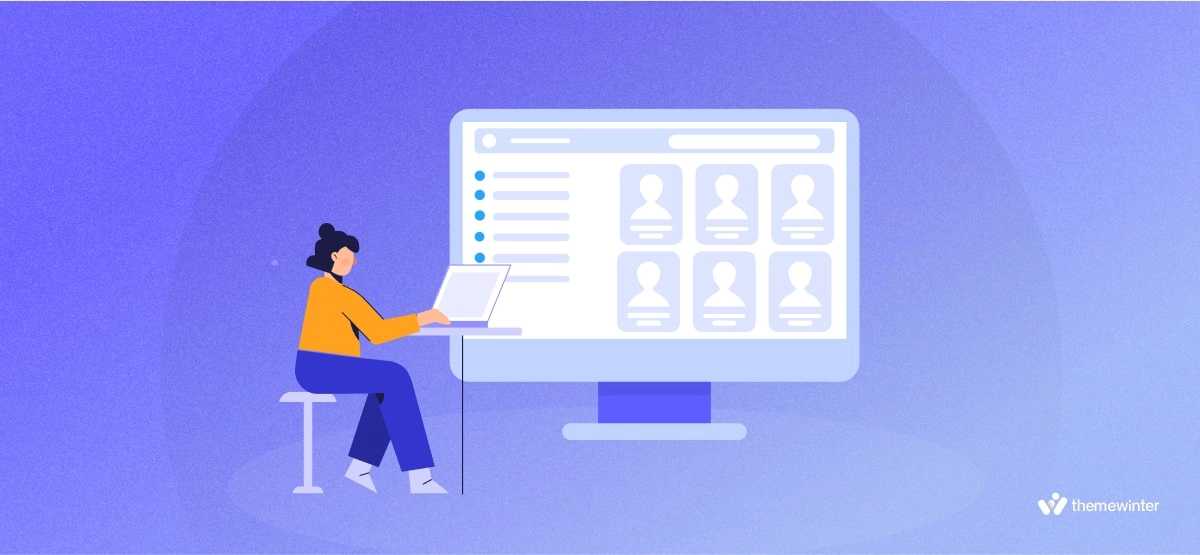
Building your online presence is a significant part of online business marketing. Moving business offline to online is a lot like moving into a new neighborhood. It’s about crafting a space that feels uniquely you, welcoming visitors warmly, and making sure they can easily find what they’re looking for. One of the cornerstones of this digital ‘home’ is your website.
But how would you do that? Let’s check it out
a) Website Design and Navigation
Your website is your digital handshake, your online smile, and the very essence of your brand all wrapped up in pixels and code. It’s also one of the significant parts of online marketing strategies. Hence, before moving business offline to online, you need to think of your website as the cozy, welcoming cafe on the block, or the store with the vibrant window display that beckons folks inside.
- First Impressions Count: Remember the pride you felt with the first signboard of your offline store? That’s your website’s homepage. It needs to embody your brand, tell your story, and give a glimpse of the treasures that await inside.
- Easy Breezy Navigation: You know how you’d intuitively guide a customer in your physical store to their desired product? Your website’s navigation should feel just as intuitive. Clear menus, well-labeled sections, and a helpful search bar are like your digital aisles guiding visitors seamlessly.
- Aesthetics Matter: Whether it’s the warm tones of a coffee shop or the crisp layout of a boutique, the visuals set the mood. A clean design, complemented by your brand colors and fonts, creates an ambiance that keeps visitors browsing.
- Responsive is the Word: We live in a world of smartphones, tablets, laptops, and more. Your website should be that friendly host who welcomes everyone, no matter the device. A responsive design ensures your site looks and feels great, from the tiniest phone screen to the largest desktop.
- Less is More: Overwhelming a visitor is like crowding your store with too many displays. Keep content concise, prioritize essential information, and ensure pages load quickly. After all, no one likes to wait, online or offline! Hence, it’s necessary to swiftly shift the process to take your business from offline to online business.
- Call-to-Actions (CTAs) are Your Besties: Think of CTAs as those little nudges you give customers—like suggesting they sign up for a newsletter or check out a sale. Well-placed, clear CTAs guide visitors on what to do next, making their experience smoother and more engaging.
Remember, building an online presence is all about recreating that warmth, trust, and ease your customers felt walking into your physical store. Your website is a pivotal part of this journey, and with the right design and navigation, it’ll be the digital space where visitors love to linger.
b) Setting Up E-commerce Components
Navigating the world of e-commerce might feel like stepping into uncharted territory. But, in essence, it’s a lot like stocking your physical store, just with some digital magic sprinkled in. From online to offline commerce marketplace, you can market your product and ensure you are not missing out on any of your target audiences.
Additionally, this online to offline commerce marketing strategy is about curating that virtual space, making it feel as tangible, welcoming, and trustworthy as your brick-and-mortar shop. And with the right tools and care, like online marketing strategies, you’re not just constructing a website; you’re crafting an experience.
Let’s guide you through the essentials of moving business offline to online.
- The Welcoming Entrance – Your Landing Page: Think of your landing page as your storefront window. It’s the first impression, the lure that invites potential customers inside. Ensure it’s clean, engaging, and captures the essence of what you offer.
- Product Listings – Your Digital Shelves: Just as you meticulously arrange products on your physical shelves, your online product listings need care. High-quality images, concise descriptions, and clear pricing are like your digital sales tags.
- Secure Payment Gateways – The Trustworthy Cashier: Remember the relief in your customers’ eyes when transactions go smoothly at the counter? Online, a secure payment gateway offers that same reassurance. Ensure multiple payment options, from credit cards to digital wallets, all within a safe and encrypted environment.
- Shopping Cart & Checkout – The Final Lap: Ever noticed how some stores make the checkout process a breeze while others test your patience? Your online checkout should be the former. Keep it simple, offer guest checkout options, and always—always—be transparent about shipping costs and times.
- Customer Accounts – The Loyalty Card: Offering customers the option to create accounts can be like giving them a digital loyalty card. It streamlines their future purchases, saves their preferences, and gives them a sense of belonging.
- Feedback & Reviews – The Digital Word of Mouth: Remember the joy when a customer would recommend your store to a friend? Online reviews are the new word of mouth. Encourage satisfied customers to leave reviews; it’s the digital equivalent of a pat on the back.
c) Digital Marketing for Your Newly Online Business
Transitioning online can feel overwhelming, but think of online business marketing as your trusty megaphone, amplifying your voice in the vast online marketplace. Hence, considering your business model and type of your core offerings, you should develop quality online marketing strategies before moving business offline to online.
Here’s how to make the most of it:
- SEO (Search Engine Optimization): Remember those days when people would find your shop by asking around? SEO is its digital counterpart. Optimize your website with relevant keywords, quality content, and user-friendly design to rank higher on search engines and become more discoverable.
- Social Media Engagement: Those lively conversations you enjoyed in-store? Take them online! Platforms like Instagram, Facebook, and Twitter are your new community hubs. Share stories, showcase products, and build a tribe of loyal followers.
- Content Marketing: Just as window displays attract passersby, quality content lures online visitors. Write engaging blogs, create videos, or design infographics that offer value, entertain, and inform.
- Email Campaigns: Consider these your friendly store updates. Regular newsletters and promotional emails keep your patrons in the loop, offering them exclusive deals and insights.
- Pay-Per-Click (PPC) Advertising: Imagine renting a billboard, but online, and only paying when someone is genuinely interested. That’s PPC. Target specific audiences and lead them directly to your digital doorstep.
- Affiliate and Influencer Marketing: Collaborate with digital personalities and other businesses. It’s like having a popular local endorse your store but on a potentially global scale.
- Analytics and Feedback: In the offline world, you’d notice trends by watching foot traffic and sales. Online, tools like Google Analytics provide rich insights into user behavior, guiding your future marketing efforts.
Remember, the essence of digital marketing isn’t just about selling; it’s about connecting. It’s building those digital bridges that let customers, both old and new, find their way to you, chat with you, and become part of your ever-growing online family.
3. Online Business Legalities and Ethics of Moving Online

It’s not just about dazzling web designs or catchy product descriptions. Behind the scenes, there’s a web of rules and responsibilities to navigate. Taking your business online is exciting, but it comes with its own set of online business legalities and ethical considerations. Let’s untangle some of these:
Data Protection and Privacy:
- GDPR and CCPA: If you’re serving customers in the EU or California, you’ll need to be aware of regulations like the General Data Protection Regulation (GDPR) and the California Consumer Privacy Act (CCPA).
These laws dictate how you should handle and protect customer data. Similarly, depending on your business location, you need to know the rules and regulations related to online business legalities set by the local government. - Consent: Always obtain explicit consent before collecting any personal data. And always give folks an easy way to opt-out. In most cases, this is one of the most important online business legalities.
Intellectual Property:
- Trademarks: Protect your brand. Ensure your business name, logo, or tagline doesn’t infringe on existing trademarks. It might also be wise to consider registering your own.
- Copyright: From blog posts to product photos, make sure all content is original or properly licensed.
E-commerce Specifics:
- Sales Tax: Depending on your location and where you’re shipping to, you might be required to collect sales tax. Stay informed about regional regulations.
- Return & Refund Policies: Clearly communicate your policies. It’s both a legal and trust-building measure.
Accessibility:
- Inclusivity Matters: Ensure your website is accessible to people with disabilities. It’s not just an ethical consideration; in many places, it’s the law.
Ethical Marketing:
- Transparency: Always be honest in your advertising of online business marketing. Misleading promotions or hiding essential information is not just bad form; it can land you in hot water.
- Endorsements & Reviews: If someone is endorsing a product because they got a free sample or are being paid, it should be disclosed.
Terms of Service & User Agreements:
Draft clear terms of service and user agreements. These documents outline the relationship between your business and your customers, setting expectations on both sides. Also, it ensures the transparency of your business and your customers, setting expectations on both sides.
4. Nurturing and Growing Your Business Online
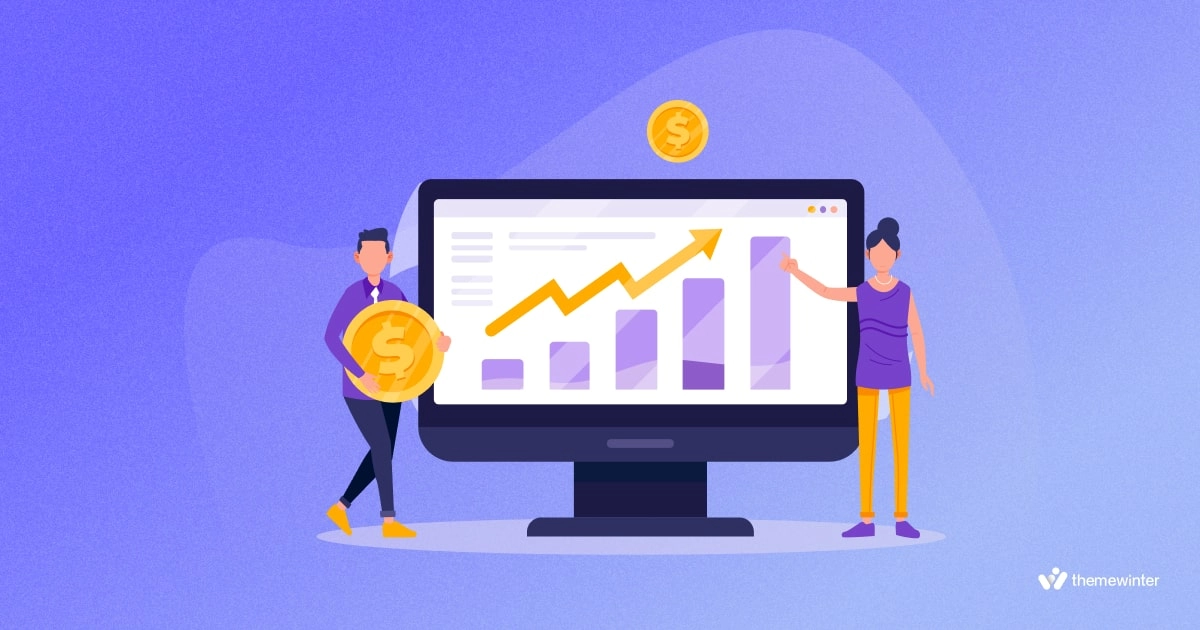
Congratulations! Now you know how to take your offline business online. By following the process, you’ve crossed the digital threshold and brought your business from offline to online business. But just as a plant doesn’t stop needing attention after it’s been reported, your online business ideas demand continuous nurturing to truly flourish. And now we’ll talk about that.
Here’s your green thumb guide to nurturing and expanding your business online-
Focus on Consistent Branding:
- Stay True to Your Roots: Remember the colors, tones, and styles you used offline? Keep them consistent online. It’s like your business’s familiar face in a new place.
- Voice and Tone: That friendly banter across the counter? Translate it into your online content. Your posts, replies, and updates should feel like they’re coming from a friend.
Keep Making Engaging Content:
- Tell Your Story: Share behind-the-scenes looks, origin stories, or customer testimonials. Let your audience connect with the heart of your business.
- Educate and Inform: Offer value. Whether it’s a how-to guide related to your product or industry insights, be a source of knowledge.
Strengthen Community Ties:
- Engage Regularly: Respond to comments, hold Q&A sessions, or simply check in with a friendly post. Make your online presence felt.
- Host Virtual Events: Whether it’s a webinar, product launch, or digital workshop, it fosters a sense of community and engagement. Also, you can check out our dedicated discussion on conducting virtual events with Google Meet and Eventin. Well, what Eventin is? Check out the following button!
Invest in Digital Marketing:
- Search Engine Optimization (SEO): Ensure that when someone’s looking for what you offer, they find you at the top of their search.
- Social Media Advertising: Target your ads to the right audience. Use platforms like Facebook, Instagram, or LinkedIn to reach potential customers.
Focus on Feedback Loop:
- Listen to Your Audience: Reviews, comments, and feedback—these are gold. They help you find out your areas of improvement and improve your growth.
- Conduct Surveys: Check in with your customers. Ask what they love and where you can do better.
Expand Your Offerings:
- Introduce Loyalty Programs: Reward returning customers. It’s a thank-you note and an incentive wrapped in one.
- Dabble in Collaborations: Partner with brands or influencers that align with your ethos. It’s like introducing your business to their circle of friends.
The digital terrain is vast and dynamic. But with persistence, adaptability, and a little bit of digital charm, you can nurture and see your business not just survive but truly thrive online.
5. Overcoming Challenges: Ensuring a Smooth Shift Online
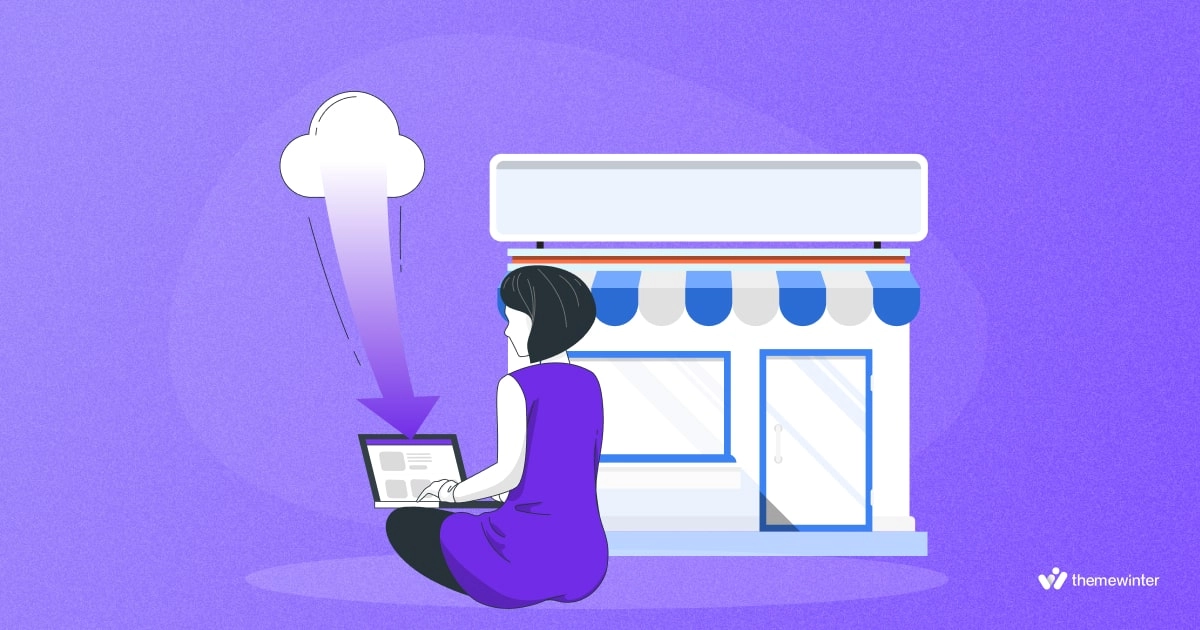
Transitioning from a physical storefront to a digital domain can feel a bit like learning to ride a bike all over again. You’re bound to have a wobble or two. But with every challenge comes a lesson, and with the right approach, you can pedal forward with confidence.
Let’s chat about some common bumps on the online road, how to take your offline business online, and how you can smoothly navigate them:
Feeling Overwhelmed with Choices:
- The Challenge: Between website designs, hosting platforms, and e-commerce tools, the choices can be dizzying.
- The Solution: Start simple. Pick user-friendly platforms like Shopify or Wix. As you gain confidence, you can explore more tailored options.
Maintaining that Personal Touch:
- The Challenge: Online, you might miss those face-to-face interactions and worry about becoming just another digital storefront.
- The Solution: Infuse your brand’s personality into every aspect. Craft engaging ‘About Us’ pages, share behind-the-scenes stories, and actively engage with customers on social media.
Worries About Tech Glitches:
- The Challenge: Websites crash, payment gateways falter, and sometimes things just don’t work.
- The Solution: Have a tech buddy or a reliable customer support line. Platforms like WordPress have vast communities ready to help. Regular backups and updates are your safety nets.
Staying Visible in the Crowd:
- The Challenge: The digital world is bustling. How do you stand out?
- The Solution: Invest in Search Engine Optimization (SEO) and regular, valuable content. Engage with your audience on social media. Remember, consistency is key.
Understanding the Digital Lingo:
- The Challenge: SEO, PPC, CMS… the jargon can be a mouthful.
- The Solution: Take it step by step. There are plenty of beginner guides and courses. And hey, even a basic understanding goes a long way!
Handling Negative Feedback Publicly:
- The Challenge: Online, feedback is immediate and public. A negative comment can feel like a stain on your reputation.
- The Solution: Approach it with grace. Respond promptly, and genuinely, and see it as an opportunity to showcase your commitment to customer satisfaction.
Remember, every business, big or small, faced a learning curve when they first ventured online. You’re not alone in this. Celebrate the small victories, learn from the missteps, and always keep that passion burning.
This is how to take your offline business online and make it gradually successful. The digital realm offers vast horizons, and with resilience and adaptability, your business can soar to new heights!
The Bottom Line
So, this was the in-depth guide on how to take your offline business online. Taking your offline business online might seem like a big leap, but it’s a leap toward towards a world of endless possibilities. Sure, there will be challenges along the way, but with the right guidance and mindset, these can be navigated.
Remember, every journey begins with a single step. By embracing the digital landscape and effective online marketing strategies, you’re not just keeping up with the times; you’re opening doors to a broader audience, endless opportunities, and a brighter future for your business.
So, gear up, take the plunge, and let your business shine online!
